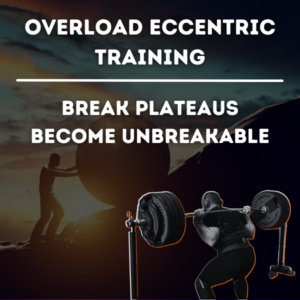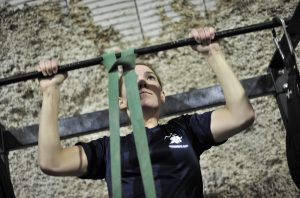Ever heard of isometric Training?
Arguably the most under-utilised, yet inordinately effective method of developing strength there is. Chances, many of you may have never heard of it. Or if you have, you might not know much about it.
Let’s dive in.
A Rock and a Hard Place
No matter what Claire did, her squat had hit a plateau. Constantly failing to improve her max strength and always in the same place. She had spent hours trying to find the sticking point she was struggling with. She had performed box squats to this depth, then below it (in a bid to gain some momentum through this point), above it (in a bid to overload her nervous system to handle heavier weights) and yet, to no avail.
How can we help her?
Well, as you will read about in a moment, isometric training tends to showcase one benefit above all else – joint angle specific strength.
A Monster Deadlift Quick Time
Bob wanted to build his monster deadlift ready for his upcoming powerlifting meet in 6 weeks time. Already sitting around the 270kg mark, he was determined to break the 280kg barrier as soon as possible.
He always struggled with off the floor strength however, resulting in him losing position at the top of the deadlift and failing to lock out the weight. He was aware that rack pulls weren’t the answer and had turned to deficit deadlifts; hoping to build the off the floor strength he needed for competition.
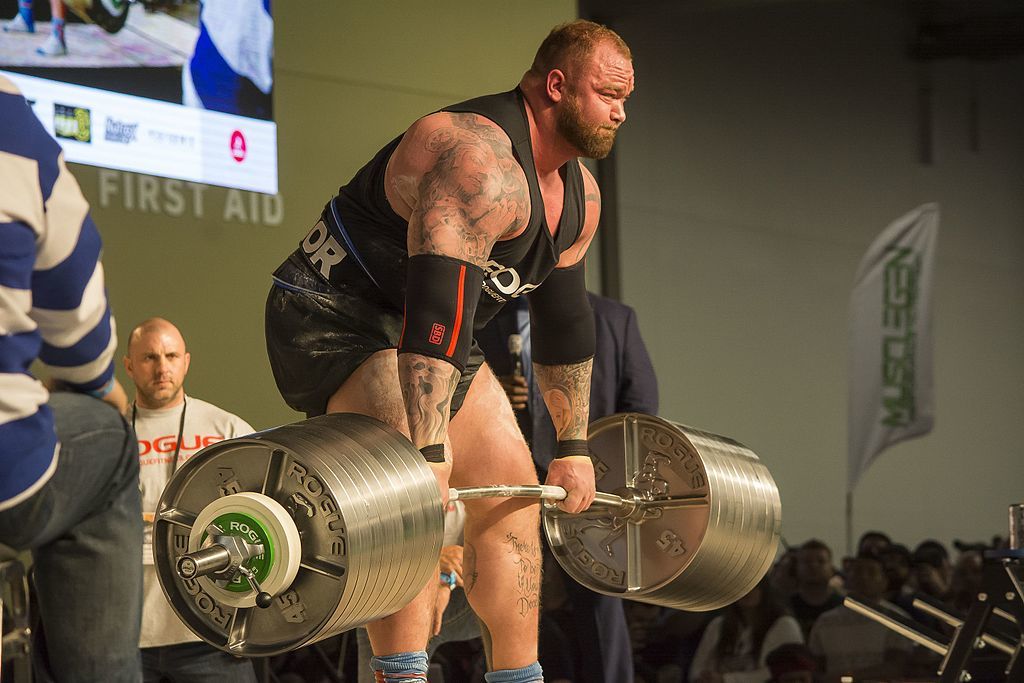
However, with all his other training included the extra range of motion was seeming too much for his recovery, resulting in noticeably greater muscle soreness when compared to his normal deadlift.
Was he destined to fail no matter what? Which other lifts would have to suffer as a result?
Injury Recovery
Jon had opted for the surgery, a complete ACL reconstruction with a patellar tendon graft. This would mean they would snip out a 1/3 of his patellar tendon to form the new ligament. A 1/3 of his available strength (or far more) gone instantaneously. How was he ever going to recover the lost tendon stiffness?
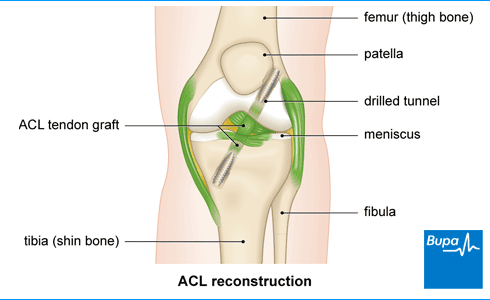
If you took the time to read the 3 case studies above, you may be wondering why the hell I brought them up.
But that is because isometric training is the answer to all 3.
ISOMETRIC TRAINING FOR STRENGTH - PROGRAM
Head here to gain access to our Brand New Training Program -
The Unshakable Strength Protocol
WHAT?
Learn the topic.
What is Isometric Training?
Isometric training (or static training as others have called it) refers to when you apply force to (i.e. attempt to lift) an immovable object or fixed resistance (e.g. a bar loaded far too heavy). Although there is a bunch of discrepancies about how long you hold for, how hard you push (as will be discussed further on in this article) etc. that is the essence of this form of training.
You attempt to lift that which cannot be lifted.
Although we’re unsure of when this method of training was initially developed, it would appear that famed old time Strongman Alexander Zass pioneered this method of training back at the beginning of the 20th century.
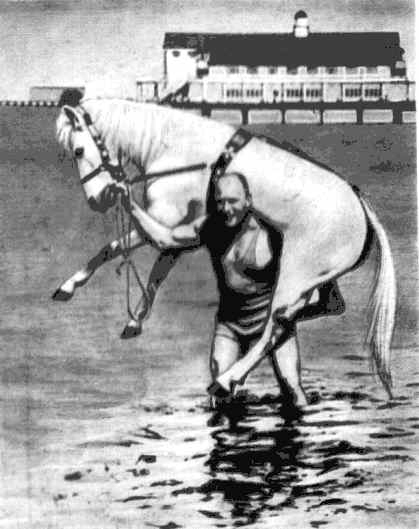
Despite being inordinately strong and have his full time career as a circus strongman, he discovered isometric training whilst attempting to train as a prisoner of war during the First World War. Here he developed his current strength to the level of superhuman, in which he literally broke the shackles keeping him down and bent the iron bars in his prison cell to escape.
You can read a little about him in this article here or in the book “The Mystery of the Iron Samson”.
Bruce Lee
Yes. You read that right. The god of Martial Arts himself, famed for his phenomenal skill but also for his power, being able to knock people over with the infamous 1″ punch, was a huge advocate of isometric training.
In fact, in addition to calisthenics and general martial arts training, isometric training was the only real form of strength training he performed.

Yet, he was incredibly strong for his body weight, powerful and overwhelmingly fast.
Be like Bruce Lee. Train isometrical-ly.
WHY?
Learn the science and theory.
3 Major Benefits
Although the benefits are seemingly endless, the 3 major positive adaptations that can be taken from isometric training are mentioned in the case studies above:
1) Joint Angle Specific Strength
2) Developing Strength Rapidly (namely in the deadlift).
3) Increased tendon stiffness.
1. Joint Angle Specific Strength
This is a topic that has been researched extensively in the scientific community and for good reason. The literature unanimously shows significant improvements in strength at the joint angle trained, with little to no changes at other angles (4, 13, 21, 25, 26).
In all 3 case studies above, being able to improve joint angle specific strength would be of huge benefit, especially to our friend Claire, who is experiencing this issue directly.
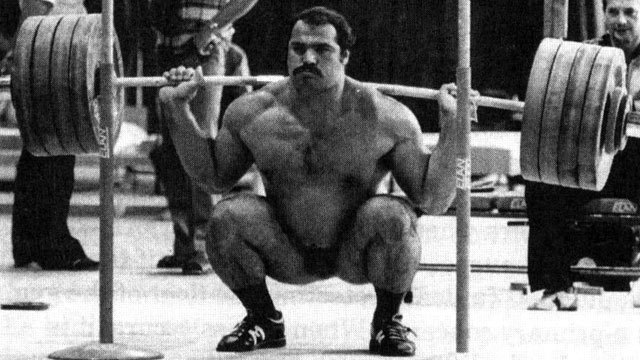
Researchers have even recommended that isometric training may be a highly effective method of training for sports that require force production in/through mechanically disadvantageous positions (i.e. sticking points) such as powerlifting and weightlifting (7, 14).
But why would you want to limit developing your strength in just the one position?
Well, although that is possible, you’re right. And you don’t have to.
When looking into the methodology of this research, we can find it to be fairly limited in terms of application. Largely from the fact that most of the research only trained at one specific joint angle, rather than a range of different angles all within the same training session. So how did they know that you’re limited to just the angle you’ve trained?
If you train a range of angles concurrently, then you build strength across the whole range. This is supported by research from Folland et al. (5) who compared a dynamic training protocol (i.e. traditional lifting) to subjects who trained isometrically at a pre-determined range of different angles, finding similar improvements in dynamic strength and much more isometric strength in the isometric group.
But what if you only want to train at one angle, yet want more strength throughout the whole movement?
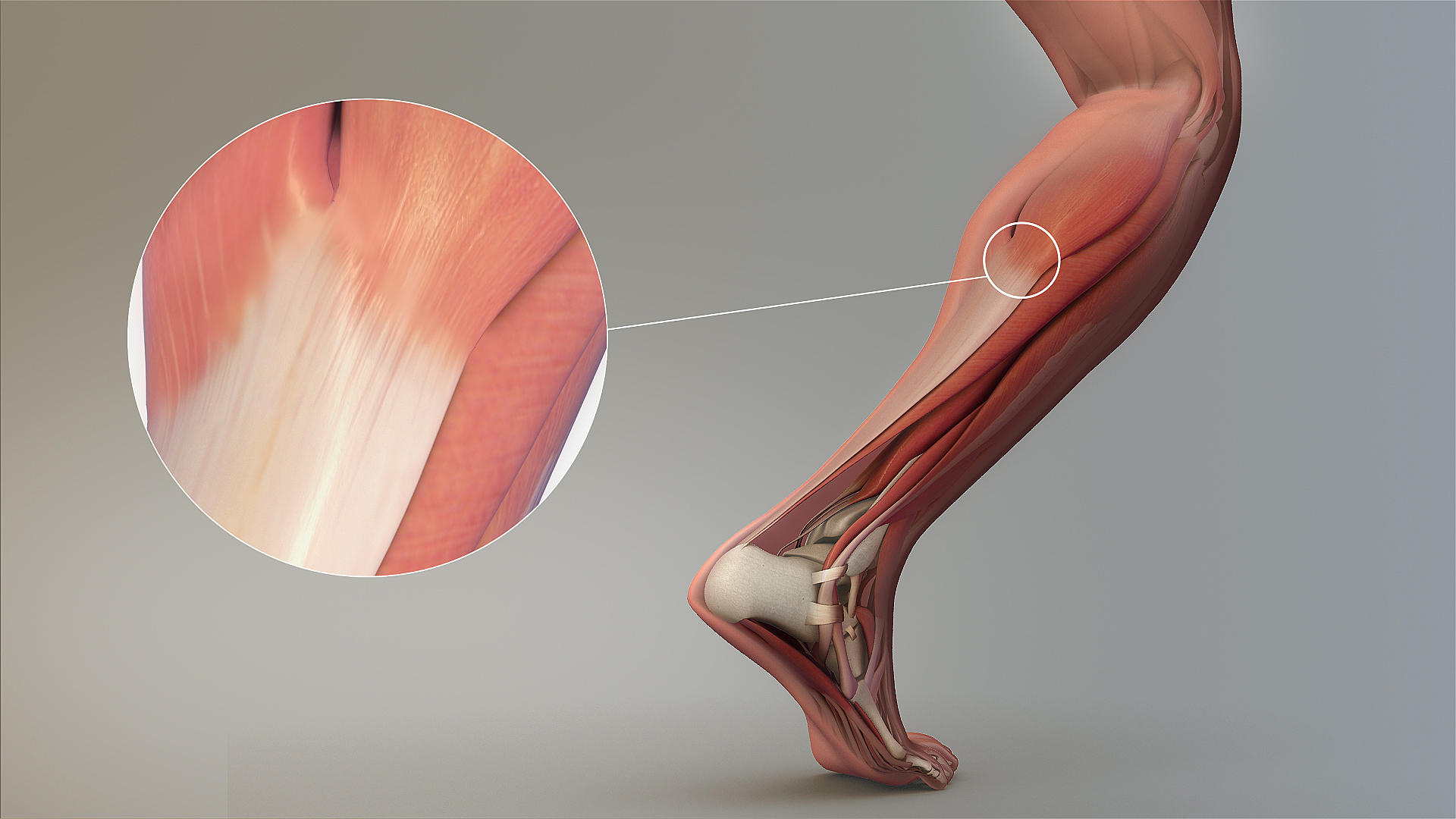
Well, you can have that too my highly impatient friend. Research has shown training at lengthened positions to result in up to a 75 degree transfer of strength throughout the rest of the movement, when compared to training in shortened positions, which limits the gains to that specific angle (25).
During all forms of training, but especially isometrics, you should train long, to be strong.
2. Increased Tendon Stiffness
It’s difficult to stress the importance of the tendons when it comes to your overall strength, joint integrity and longevity of your health. They literally are the link to transferring force from muscles to bones and therefore generating movement (3).
And although the tendons are trained when you perform traditional lifting regimes, due to a variety of factors (namely a lack of blood flow and neural receptors), the muscles tend to grow disproportionately faster when compared to tendinous tissues.
However, this is made worse by the fact that most training recommendations nowadays are centred around developing muscle.
But is there not a way to stimulate the tendon without the same stimulation to the muscle?
This question stuck with me to the point where I spent a large portion of my Master’s degree to research the answer.
And the answer is…*drum roll please*…
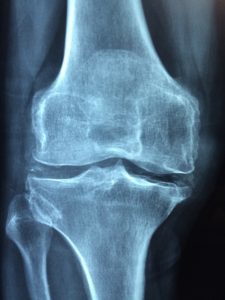
Isometric training.
As discussed in “3 Methods to Muscle Mass”, mechanical tension (which would be the key factor for building muscle through isometric training) is only 1 factor.
In isometric training, the muscle tissue doesn’t really change length, meaning the strain is distributed into the tendons at a much greater rate. As a result, isometric training has been shown to be highly effective at improving tendon stiffness across a range of populations (17, 18, 19, 20).
Perfect for our friend Jon, requiring the thickening of his patellar tendon once more.
And when comparing isometric training against dynamic training to build some meaty tendons, isometric training comes out on top (15).
Provided you know how to program them effectively into your training they will strengthen your joints beyond what you thought possible.
3. Building Rapid Strength Rapidly
This is what most people will be after. A quick burst through a plateau, a peak of strength before competition or to simply build strength as fast as possible.
Isometric training in early studies has been shown to build by 30% in 5 weeks (21) and 40% after 8 weeks of regular training (27). It is important to note that this study involved untrained individuals, however even when using novice trainees and comparing isometric training to traditional dynamic training, isometric training still comes out on top (12).
UNSHAKABLE STRENGTH PROTOCOL
9 Weeks of Brutal Training - Gym and Equipment Free Variations.
The Unshakable Strength Protocol - the most comprehensive guide on Isometric Training for Strength.
Is isometric training better for Beginners?
There is an argument to be said for the psychosomatic relationship between the mind and body when it comes to strength here.
Although there are a huge number of physiological benefits that occur when first learning to lift; a large portion of strength also comes from simply familiarising yourself with the concept of straining under load.
This is an actual psychosomatic response, known as neurological inhibition, in which your body (at first) simply doesn’t trust you to exert huge amounts of force.
To put it simply, strength of the nervous system is a balance between excitation and inhibition.
Two different people, excitation wants to lift and throw and jump and fight the world.
Versus inhibition who wants to hide from it all and protect you.
And trust me, isometric training teaches both people that you know what you’re doing.
So you could argue that isometric training is great for novice but what about the already trained, stronger individuals?
Well, research by O’Shea et al. (22) found isometric training to produce significantly greater improvements in squat strength when compared to traditional isotonic training, with an average of 6 sets of 3 sec contractions, twice per week.
Possibly the most interesting finding in this study is that the most significant benefits were found in the strongest subjects tested (22). And this has been mirrored in another study by Giorgi et al. (6), who also found stronger individuals to display a greater increase in strength when compared to weaker subjects.
Stronger people benefit more?
Whilst all parties benefit, as mentioned above, the early phase adaptations of strength in novice trainees largely comes from decreasing activation of opposing muscle groups (e.g. the hamstring learning to relax when the quadriceps are contracting – 2, 10), improved activation of synergistic/supporting muscle groups (23) and reduced neurological inhibition (1).
Whereas because strength trained individuals are already a little more familiar with these concepts, they can truly exert more force during each contraction, providing a greater overload to the system.
Neural Overload
There are two mechanisms explaining the Neural Contributions to strength.
- The Hennmann Size Principle shows that the greater the load lifted/exertion required by the body, the larger the motor units will be recruited (11).
- Rate Coding – referring to the frequency at which the motor units fire in a given time frame – the higher the frequency, the stronger the contraction.
As simple as it may sound, one proposed mechanism for increasing muscular strength is purely down to the magnitude of force developed from contractile component (8) and you are going to produce significantly more force during isometric training.
Now, we know Eccentric Overload Training to be the most effective method for enhancing the efficiency of the size principle – but what about firing frequency?
During more “Traditional” training, the dynamic control of the weight through time and space actually hinders the frequency at which motor units can fire, effectively “dampening” your output.
However, the static nature of Isometrics means we can focus purely on aggressive, violent output and avoid being limited by the constraints of the movement.
HOW?
Learn the implementation.
So how does isometric training work? How can you tap into superhuman strength or fix injuries with this form of training.
This is where we get into the nitty gritty side of things.
First off, we need to identify one thing. How the hell do you measure intensity? I mean sure when you’re physically lifting a weight, for example 140kg, you know that lifting 70kg is 50% 1RM. But if the object isn’t moving, then what?
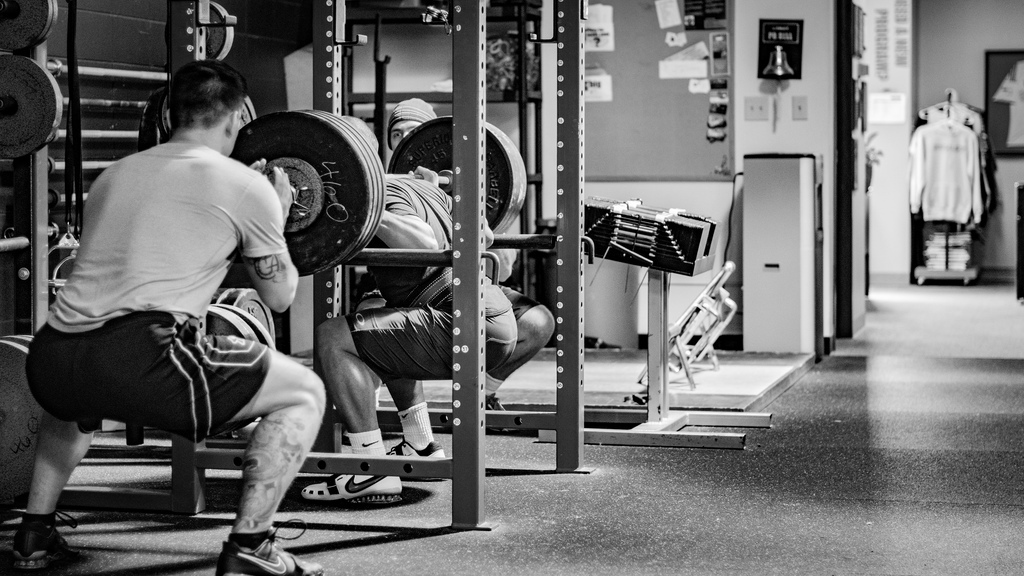
Well, the research tends to use a calculable scale known as a % of your maximal voluntary contraction (%MVC). This is essentially on what scale are you using maximal exertion.
But what if you don’t have a huge isokinetic dynamometer in your gym with which to train?
Well there is thankfully, two pieces of evidence to suggest, you don’t need one.
- Research has found that subjective judgement of intensity translates quite well over to objective measures of exertion. It means how hard you think you are pushing against something and how hard you physically are pushing are quite similar (8). You can also translate the measurement of %MVC over to RPE ratings, which you can read more about here.
- Although a precursor to the next section, many of the studies mentioned above never actually measured the intensity in an objective way (e.g. using fancy kit). Instead, they simply instructed participants to simply “lift as hard as possible”.
Time vs. Volume vs. Intensity
Now, within isometric training, there is another variable to consider. In addition to reps, sets, intensity etc. we must also consider the duration of the effort (i.e. is one “rep” lasting 5 seconds or 10 seconds?).
As is the same in traditional training volume, there is a notable dose response relationship, in which finding the optimal amount is key.
Too little – you won’t progress as fast as you could due to lack of stimulation.
Too much – you won’t progress as fast as you could due to excess fatigue.
This has been shown when comparing studies with similar training interventions, similar participants, similar training intensities etc. finding a 29.6% increase in strength in one study (16) and only 19.2% (still a huge improvement) in another (5). The only major difference, was study 1, prescribed a total of 600 seconds of contraction time, whereas study 2 prescribed 240 seconds.
Continuing on from this, a further study by Szeto et al. (24) found greater improvements in a lower intensity training group vs. maximal effort. However, the one variable they didn’t change, was the amount of contraction time. Meaning they asked one group of participants to perform 750 seconds of 100% maximal effort contractions per week.
I don’t care who you are…no one is effectively recovering from that.
So, you need to find a sweet spot, the same way you do with traditional training.
And, it is the same with traditional training, in that the higher the intensity (%MVC), the harder you exert force against the immovable object, the less time you are able to maintain this for. And the less total number of reps you should be doing.
Two Main Methods
Positional Isometrics
This is the most common form of isometric work that you will see people perform.
It involves performing a dynamic movement that you would typically do in the gym (e.g. a deadlift) – but instead, you either introduce OR Prolong an isometric contraction/hold.
Although they don’t yield the same neurological benefits – they’re a fantastic tool for:
- Increasing tension and stiffness within a movement.
- Targetting a weak point – if you’re weak in a position, spend more time there!
- Teaching technique – particularly within the squat. If you struggle with stability or control, introducing pauses into different stages of the movement is a sure fire way to correct them.
Functional Isometrics
This is probably where most people are going to gravitate and for good reason. It has direct transfer over to the exercise of lift you are aiming to improve upon.
Functional isometrics refers to setting up equipment the same way you would in a normal life but loading the bar to the point where it physically won’t move.
Say your max deadlift is 120kg. If you load the bar up to 200kg, that sucker won’t even budge. So, you can perform your isometric deadlifts.
The only caveat to this method, is the necessity of equipment such as blocks or a lifting rack to micro-adjust the position you want to be in.
However, the world is in Bob’s (the deadlifter’s) favour. As mentioned earlier, training your isometric strength in the longest position possible (i.e. the bottom of the squat or deadlift) has a greater transfer over to the rest of the movement. So, no extra equipment needed for the deadlift.
I always recommend people to use the following examples of protocols/progression:
Week 1 –
- 8 sets of 4 reps (each with a 5 sec hold) at 70-80% MVC
- (8 x (4 x 5)) =160 seconds.
- Spread across two sessions (e.g. 4 sets per session).
Week 2 –
- 10 sets of 5 reps (each with a 3 sec hold) at 80-90% MVC.
- (15 x (5 x 3)) = 225 seconds.
- Spread across three sessions (e.g. 5 sets per session).
Week 3 –
- 20 sets of 3 reps (each with a 3 sec hold) at 90-100% MVC
- (20 x (3 x 3)) = 180 seconds.
- Spread across 2-3 sessions (e.g. 7-10 sets per session).
Where to Train
If you are using isometrics purely to address a sticking point (i.e. setting the bar 3” off your chest on the bench press) then you can start, there. After the 3-week protocol above at this sticking point, begin to work lower down into a longer range of motion.
If you don’t want to address a specific sticking point, instead, simply do the reverse. Start in the longest position and gradually work your way up throughout the movement (to where your weakest position is). When you’ve hit that point, restart back in the bottom.
Refine Technique
Another hidden gem of isometric training is the ability to refine the technique of a movement.
When you think about it logically, a maximal effort exertion during isometric training is far more intense to the human body than your 1RM is. This may sound obvious, but a weight that doesn’t move, is far harder to move, than a weight that does move (I know…infinite wisdom right there).
But because of the motionless position, you can fine tune aspects of your technique that you may have previously missed as the lift takes place.
I often use this form of training (even if it’s not programmed necessarily) to identify weak points in my clients, as it reveals instantaneously, where their technique is most likely to break (e.g if they exert 100% MVC during a squat and their knees cave in). But, it keeps them safe as no actual movement is occurring.

Joint Angle Specific Isolation Training
Although this isn’t necessarily as effective building strength, it can be a great way to rehab/recover from a significant injury, particularly any injuries involving tendon ruptures.
Simply using a machine that isolates the muscle in question, set the machine to find the weakest range of motion. So for Jon, we would set the leg extension machine at around 90 degrees of knee flexion.
Perform isometric contractions with a lower intensity (e.g. no more than 80% MVC) for longer duration’s of around 8-15 seconds. This allows for the usual training he does to continue, whilst also prescribing an exercise dedicated solely to thickening the damaged tendon.
RECOMMENDED – Build a Foundation First
Due to the incredible high intensity nature of Isometrics, we strongly advise building a foundation of strength prior to their use.
This isn’t necessarily about injury risk – the beauty of Isometrics is their autoregulated control reducing the likelihood of muscle-related injuries.
This is more about achieving optimal results.
Your body is possesses natural “governors / limiters” that inhibit your output. They think they know best, and as a result, you’re only ever operating at 20 – 30% of your muscular potential.
Our New Protocol, Unbreakable Eccentrics capitalizes on the latest research and practical methodology for implementing Eccentric Training – the main benefit of which is enhanced neural drive and reduced inhibition.
As part of the Superhuman Protocol we have developed, we strongly recommend completing the Unbreakable Eccentric Program before jumping into Isometric training, to truly maximize your potential.
*NEW - UNBREAKABLE ECCENTRICS
Have you guys seen our Brand New, Comprehensive Guide to Overload Eccentrics? The perfect foundational protocol to execute before implementing The Unshakable Program.
Contraindications and Warnings
Relax carefully
Because of the sheer intensity of isometric training, your nervous system recruits motor units that may have previously lay dormant, as you will have never hit the required threshold to activate them.
As a result, your body lacks the autonomic control over these fibres. What makes things much harder to control? Speed. If you slow down and imagine ramping up to the maximal effort and then slowly back down, you are much less likely to receive any muscle spasms following the rep you just performed.
Note, this isn’t going to be forever, just until you learn how to use this type of training safely and effectively.
Sympathetic Stimulation
Following on from my previous point, the huge surge within the nervous system triggers an inordinate amount of sympathetic stress. This means that if you’re going to introduce this into your training either as an addition to your current regime (recommended) or even if you replace an exercise entirely, there is extra sympathetic stimulation. To maintain your longevity and prevent overtraining, you need to make sure you’re balancing that out with some parasympathetic exercise.
Summary
- Isometric training refers to exerting force against a fixed resistance.
- 3 Major Benefits include – fixing sticking points/joint angle specific strength, building strength rapidly and increasing tendon stiffness.
- All experience levels benefit. Weaker benefit from learning proper neurological coordination, decreasing neurological inhibition and refining technique. Stronger have been shown to benefit more due to the greater neural overload they are able to produce per rep.
- Functional Isometrics = squatting against fixed bar. Joint Angle Isolation Training = Isolating a joint range of motion to overload specifically (e.g. a leg extension at 90 degrees).
- You can measure intensity by %MVC or RPE.
- There is a clear relationship between contraction duration and intensity. If you’re going to be working at 90%MVC or 9/10, you should limit contraction duration to 5 seconds or less.
- Be careful of the sympathetic stimulation. Make sure you’re relaxing carefully to avoid any muscle strains/spasms.
Case study number 3 – Jon = That was actually me (mind blown I know). I used isometric training (and continue to use) in order increase tendon thickness following my ACL reconstruction to great success.
Reference List
- Aagaard, P., Simonsen, E. B., Andersen, J. L., Magnusson, S. P., Halkjær-Kristensen, J., & Dyhre-Poulsen, P. (1998). Neural Inhibition During Eccentric And Concentric Quadriceps Contraction: Effects Of Resistance Training. Medicine & Science in Sports & Exercise, 30(5), 207
- Cannon, R. J., & Cafarelli, E. (1987). Neuromuscular adaptations to training. Journal of Applied Physiology, 63(6), 2396-2402
- Cavagna, G. A., Citterio, G., & Jacini, P. (1981). Effects of Speed and Extent of Stretching on the Elastic Properties of Active Frog Muscle. Journal Of Experimental Biology, 91(1), 131-143
- Duchateau, J., & Hainaut, K. (1984). Isometric or dynamic training: differential effects on mechanical properties of a human muscle. Journal of applied physiology, 56(2), 296-301
- Folland, J. P., Irish, C. S., Roberts, J. C., Tarr, J. E., & Jones, D. A. (2002). Fatigue is not a necessary stimulus for strength gains during resistance training. British journal of sports medicine, 36(5), 370-373
- Giorgi, A., Wilson, G. J., Weatherby, R. P., & Murphy, A. J. (1998). Functional Isometric Weight Training: Its Effects on the Development of Muscular Function and the Endocrine System Over an 8-Week Training Period. The Journal of Strength & Conditioning Research, 12(1), 18-25
- Golden, C. L., & Dudley, G. A. (1992). Strength after bouts of eccentric or concentric actions. Medicine and Science in Sports and Exercise, 24(8), 926-933
- Graves, J. E., Pollock, M. L., Jones, A. E., Colvin, A. B., & Leggett, S. H. (1989). Specificity of limited range of motion variable resistance training. Medicine and Science in Sports and Exercise, 21(1), 84-89
- Hackett, D. A., Cobley, S., Davies, T., Michael, S., & Halaki, M. (2017). Accuracy in estimating repetitions to failure during resistance exercise.The Journal of Strength & Conditioning Research
- Häkkinen, K., Alen, M., & Komi, P. V. (1985). Changes in isometric force‐and relaxation‐time, electromyographic and muscle fibre characteristics of human skeletal muscle during strength training and detraining. Acta Physiologica, 125(4), 573-585
- Henneman, E., Somjen, G., & Carpenter, D. O. (1965). Excitability and inhibitibility of motoneurons of different sizes. Journal of neurophysiology, 28(3), 599-620
- Jones, D. A., & Rutherford, O. M. (1987). Human muscle strength training: the effects of three different regimens and the nature of the resultant changes. The Journal of physiology, 391(1), 1-11
- Keller, J. L., Housh, T. J., Smith, C. M., Hill, E. C., Schmidt, R. J., & Johnson, G. O. (2017). Sex-Related Differences in The Accuracy of Estimating Target Force Using Percentages of Maximal Voluntary Isometric Contractions Versus Ratings of Perceived Exertion During Isometric Muscle Actions. The Journal of Strength & Conditioning Research.
- Kitai, T. A., & Sale, D. G. (1989). Specificity of joint angle in isometric training. European journal of applied physiology and occupational physiology, 58(7), 744-748
- Kubo, K., Ikebukuro, T., Yaeshima, K., Yata, H., Tsunoda, N., & Kanehisa, H. (2009). Effects of static and dynamic training on the stiffness and blood volume of tendon in vivo. Journal of Applied Physiology, 106(2), 412-417
- Kubo, K., Ikebukuro, T., Yata, H., Tsunoda, N., & Kanehisa, H. (2010). Time course of changes in muscle and tendon properties during strength training and detraining. The Journal of Strength & Conditioning Research, 24(2), 322-331
- Kubo, K., Kanehisa, H., & Fukunaga, T. (2001). Effects of different duration isometric contractions on tendon elasticity in human quadriceps muscles. The journal of physiology, 536(2), 649-655
- Kubo, K., Kanehisa, H., Ito, M., & Fukunaga, T. (2001). Effects of isometric training on the elasticity of human tendon structures in vivo. Journal of applied physiology, 91(1), 26-32
- Kubo, K., Morimoto, M., Komuro, T., Tsunoda, N., Kanehisa, H., & Fukunaga, T. (2007). Influences of tendon stiffness, joint stiffness, and electromyographic activity on jump performances using single joint. European journal of applied physiology, 99(3), 235-243
- Kubo, K., Ohgo, K., Takeishi, R., Yoshinaga, K., Tsunoda, N., Kanehisa, H., & Fukunaga, T. (2006a). Effects of isometric training at different knee angles on the muscle–tendon complex in vivo. Scandinavian journal of medicine & science in sports, 16(3), 159-167
- Lindh, M. (1979). Increase of muscle strength from isometric quadriceps exercises at different knee angles. Scandinavian journal of rehabilitation medicine, 11(1), 33-36
- O’shea, K. L., & O’shea, J. P. (1989). Functional Isometric Weight Training: Its Effects on Dynamic and Static Strength. The Journal of Strength & Conditioning Research, 3(2), 30-33
- Rabita, G., Pérot, C., & Lensel-Corbeil, G. (2000). Differential effect of knee extension isometric training on the different muscles of the quadriceps femoris in humans. European journal of applied physiology, 83(6), 531-538
- Szeto, G., Strauss, G. R., Domenico, G. D., & Lai, H. S. (1989). The effect of training intensity on voluntary isometric strength improvement. The Australian journal of physiotherapy, 35(4), 210 (8), 2241-2249
- Thepaut-Mathieu, C., Van Hoecke, J., & Maton, B. (1988). Myoelectrical and mechanical changes linked to length specificity during isometric training. Journal of Applied Physiology, 64(4), 1500-1505
- Weir, J. P., Housh, T. J., Weir, L. L., & Johnson, G. O. (1995). Effects of unilateral isometric strength training on joint angle specificity and cross-training. European journal of applied physiology and occupational physiology, 70(4), 337-343
- Young, A., Stokes, M., Round, J. M., & Edwards, R. H. T. (1983). The effect of high‐resistance training on the strength and cross‐sectional area of the human quadriceps. European Journal of Clinical Investigation, 13(5), 411-417



